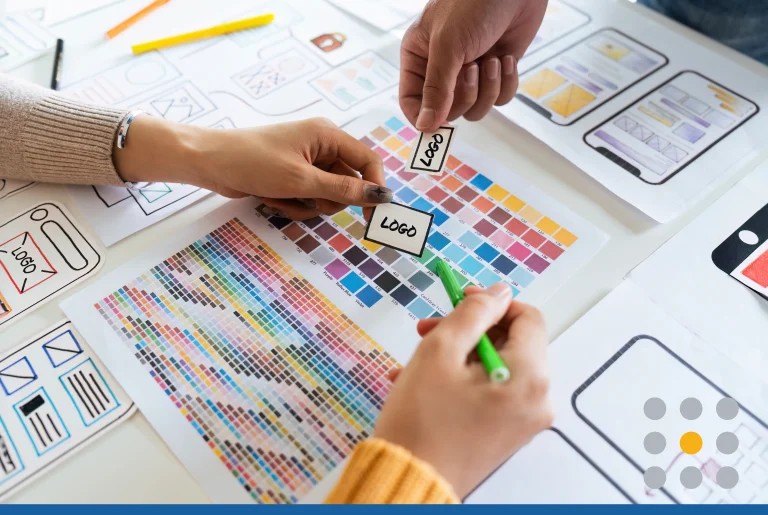With the reach and influence of the internet, there are more people watching your brand than ever.
A unique and memorable logo is what sets your company apart–and it’s important that you convey your message clearly.
Even though logo design is crucial for taking your business to the next level, it isn’t always easy to get right. Even the most successful organizations can go wrong.
In 2010, Gap’s logo redesign was reversed after only a week and Yahoo’s rebranding suffered a wave of backlash.
Whether you’re just starting the design process or you’re revamping an existing logo, there are a lot of common logo design mistakes you can learn from.
Let’s take a closer look at some of the pitfalls and errors that logo designers can fall victim to–and what you should do instead.
Why is Logo Design So Important?
While the logo is just one part of your advertising strategy–it’s one of the most crucial aspects of any brand to get right.
Potential customers should understand your company and it’s vibrant personality at first glance.
Crafting the perfect logo is never an exact science. It takes hard work, experimentation, and a lot of creativity to put together a logo that sums up your company’s mission.
While there isn’t a formula for creating a good logo, it’s vital that you have a basic theoretical understanding of what makes a compelling design.
Balancing color, imagery, and font design to convey a message isn’t easy–but it could mean the difference between success and failure for your business.
Logo Design Mistakes to Avoid at All Costs
When it all comes down to it, your logo design is an investment.
It isn’t enough to invest your money and time into property or equipment–you need to give your logo the attention it needs to represent your business well.
If your logo looks amateurish or ugly, then so will your business.
Avoiding these logo design mistakes can keep all your hard work from going down the drain.
1. Poor Font Choice
When it comes to creating a successful logo, choosing the right font can make or break a design.
Going over the top with fonts will just make your brand look silly or unprofessional. It’s not uncommon for a logo to fail because of a poor choice in a font (like the infamous Comic Sans or Papyrus).
All companies have their own personalities–and fonts do too. You should choose the right font personality for your business’s brand. For example, a hand-drawn font vs a serious, bold font will give off a different vibe and convey different attributes.
Spend some time researching the various fonts that match your company’s style. Don’t be afraid to try out different fonts or modify them to match your needs. You could even create your own!
2. Too Busy
While you might be tempted to throw as much as you can into your logo, don’t go overboard with the design.
Too much complexity or a mix of conflicting images can throw off the viewer and undermine the purpose of your brand.
Simplicity is key for your logo design. Here’s why:
- Versatility. You want your logo to be versatile. It should be able to be reproduced in different sizes and for different mediums without losing any of its style or meaning
- Memorability. When a viewer looks at your logo, you want it to stick with them. That way, when they think of your product, your logo and brand name will come to mind. It needs to be easy to remember and understand
- Impact. All a customer should have to do to understand your logo is to look at it. With one glance, they should get a sense of what your company is and what it stands for
Try to boil it down to the essence of what your company represents.
Adding too much to the design could ruin the legibility and brand recognition of your logo. You want to make sure that your design is simple, clean, and memorable.
3. Too Abstract
Another logo mistake to avoid is going too far with the simplicity.
You’re still trying to convey a pretty complex message to your potential customers with just one logo. Don’t assume that your viewers will always fill in the blanks.
If someone looks at your logo and is left with a feeling of confusion or is struggling to put the pieces together, you haven’t done your job. Aim for a design that is simple without losing any of its purpose.
Don’t be afraid to add details–you don’t need a lot to get your message across. All it takes is a few simple details in the font, color, and spacing of the image to portray your business’s mission statement.
4. Copycat Design
There’s not much that will ruin your design faster than copying a more successful competitor.
Whether it’s intentional or not, having a design that looks similar to another company’s logo can sabotage your marketing attempts. Not only is it illegal, but you’ll probably get called out sooner or later.
Beyond the issue of outright plagiarism, if your logo looks too similar to that of your competitor, you’re opening yourself up to comparison to other brands. If there’s a widely recognizable brand logo that looks similar to yours–your company will be the one that gets the heat.
Of course, you can’t check every design in the world for similarities. Be sure to do a quick check of your closest competitors for any significant red flags.
5. Raster Images
When designing a logo, it’s vital that you use a vector graphics program.
A vector graphic is made up of mathematically precise points, which means that the design will be consistent across all mediums and in any size.
The alternative is a raster graphic, which is made out of pixels. These images can’t be scaled to size, which means that your logo will look blocky and pixelated at a larger size.
Since we’re now entering the era of internet and mobile phones, it’s more important than ever to make sure logos scale correctly on different devices. Avoiding raster images will help people view your logo on any device that they’re using.
Instead of using Adobe Photoshop–which uses raster images–use an alternative like Adobe Illustrator or Corel Draw instead.
6. Driven by Trends
While staying on trend is a necessary part of marketing your business, there’s a fine line between trendy and cliche.
All trends will eventually come and go. A well-designed logo has to be timeless–you don’t want to have a clunky, out of date logo after a few years.
Even though you should stay aware of the latest trends, don’t feel compelled to stick by them.
Relying too much on trends is a big mistake for your logo. Instead, try to focus on your visual identity as a business. What are you trying to get across to your customers? Who are you as a company and what are your values?
Designing a logo based exclusively on the latest trends might work for the time being, but it’ll quickly lose steam with your target audience.
7. Clashing Colors
Finding the right balance of color in your logo can be just as crucial as picking the right font.
If your colors don’t match your company’s message or the color combination doesn’t work–your logo will come off as clunky and unsophisticated.
The best way to avoid this issue is to avoid color altogether at first. This doesn’t mean that your logo should be colorless–but it might be a good idea to start your design in black and white.
Once you’ve come up with a strong concept and design, then it’s time to add the color.
By then you’ll already have the shape of your logo, and you’ll know what idea you’re trying to get across. At this point, you can try out a few different colors until you hit the color that really fits with your design.
8. Unclear Intention
Beneath the font, image, and color is an underlying sense of intention.
The visual style gives viewers an understanding of your company’s values, purpose, and the emotional link to the product.
For example, you would expect a different emotional intention behind a logo for an airline than for a food bank. Customers will connect your logo to the company’s essential purpose, so you need to make sure these match up well.
If your company is all about fashionable trends, picking something that’s strong, bold, and edgy will resonate with your audience. For a customer service, on the other hand, something calm and trustworthy will be a better fit.
Take a moment to reflect on the visual identity that you’re trying to create for your company.
What do you want your logo to get across? What do you want people to feel when they look at your logo?
Putting It All Together
Designing the right logo for your business can feel frustratingly subjective.
But if you do your research, know what logo design mistakes to avoid, and understand your target audience–you’re much more likely to get it right.
Ready to design your own logo? Try our free logo design tools to make a professional, custom design now!







